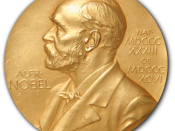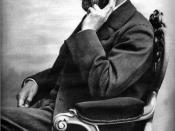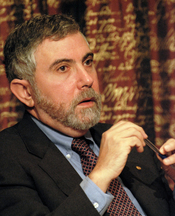The Nobel Prize
The Nobel prize is the first international award given out every year since 1901. Physics, chemistry, medicine, literature and peace are the five prizes to be won. In 1968, the Sveriges Riksbank, The Bank of Sweden, instituted the Prize in Economic Sciences in memory of Alfred Nobel, founder of the Nobel Prize. In the beginning, more than three prize winners could share a Nobel Prize, although this was never practiced. In 1968, the number of prize winners was restricted to three.
When someone wins the Nobel prize, they are awarded with a diploma, a medal, and a cash prize which varies every year. In the years 2001 and 2002, the Nobel prize winners were awarded $10,000,000. The medals that the winners are awarded look like this:
The medals for Physics, Chemistry, Physiology or Medicine and Literature were modeled by the Swedish sculptor and engraver Erik Lindberg and the Peace medal by sculptor Gustav Vigeland.
The front side of the three "Swedish" medals (Physics and Chemistry, Physiology or Medicine, and Literature) is the same, featuring a portrait of Alfred Nobel and the years of his birth and death in Latin which is written as: NAT-MDCCC XXXIII OB-MDCCC XCVI. Alfred's face on the Peace and economics medal has a different design. The back of the three Swedish medals all have the same words engraved; "Inventas vitam juvat excoluisse per artes." The Peace medal has the inscription "Pro pace et fraternitate gentium" and the Economics medal has no quotation at all on the reverse. Up to 1980, the three Swedish medals were made with 23 k gold and weighed approximately 200g. Now they are made of 18 k green gold plated with 24 k gold.
Amartya Sen
Amartya Sen was the winner of the Nobel Economics prize in 1998.


